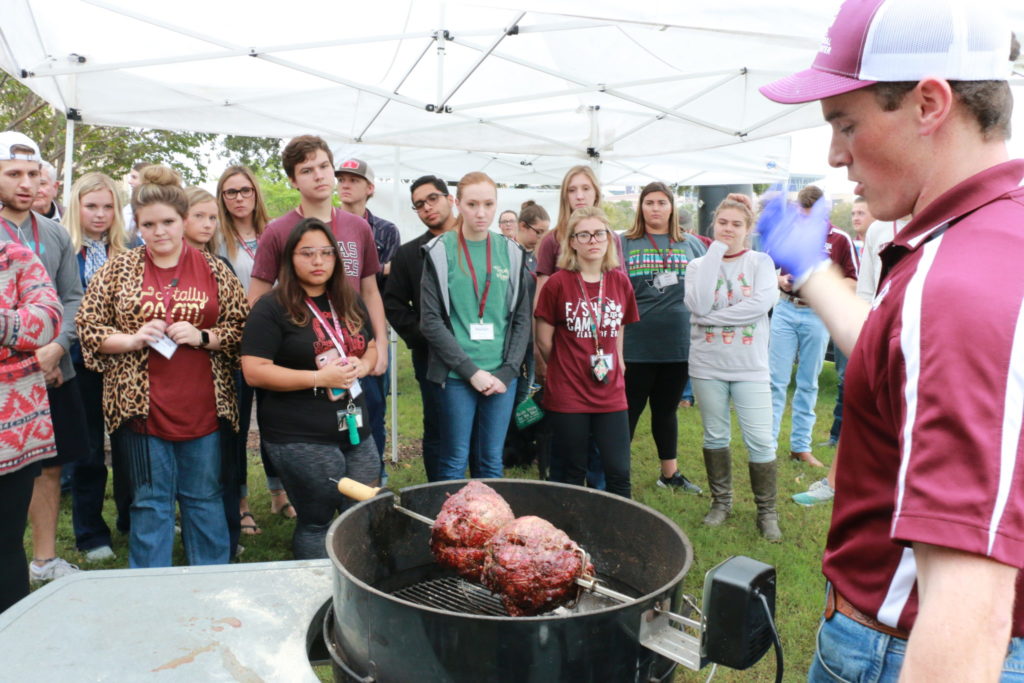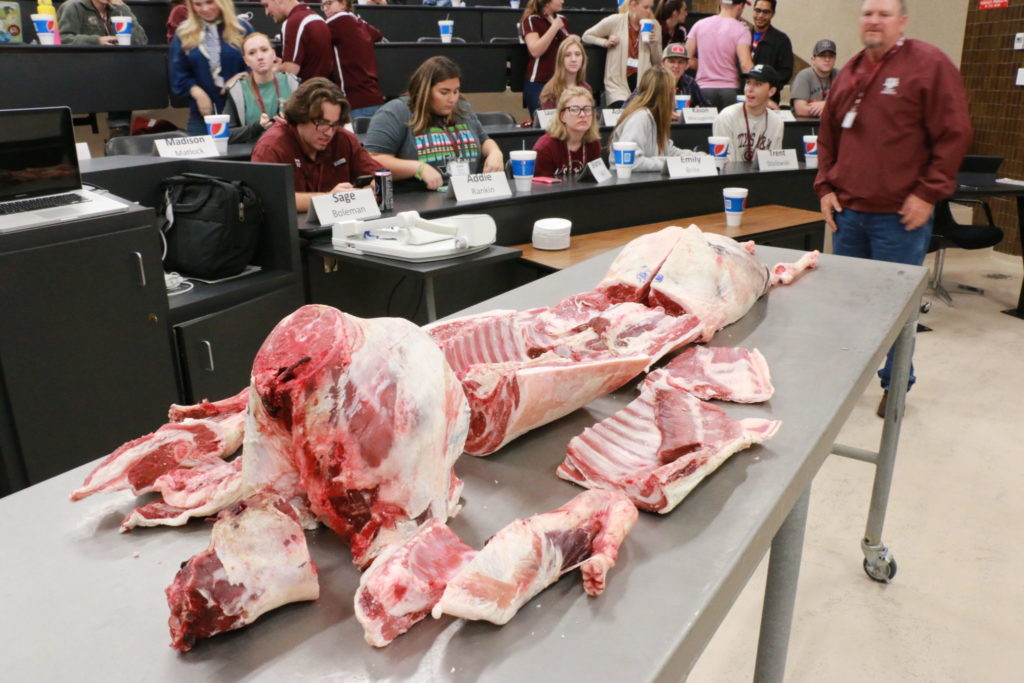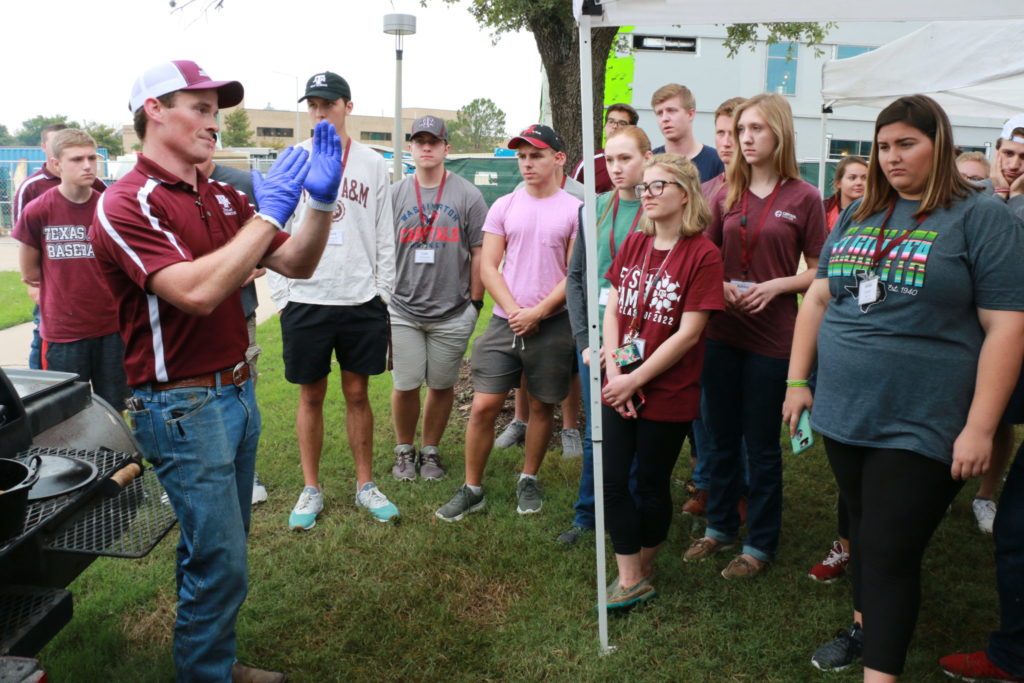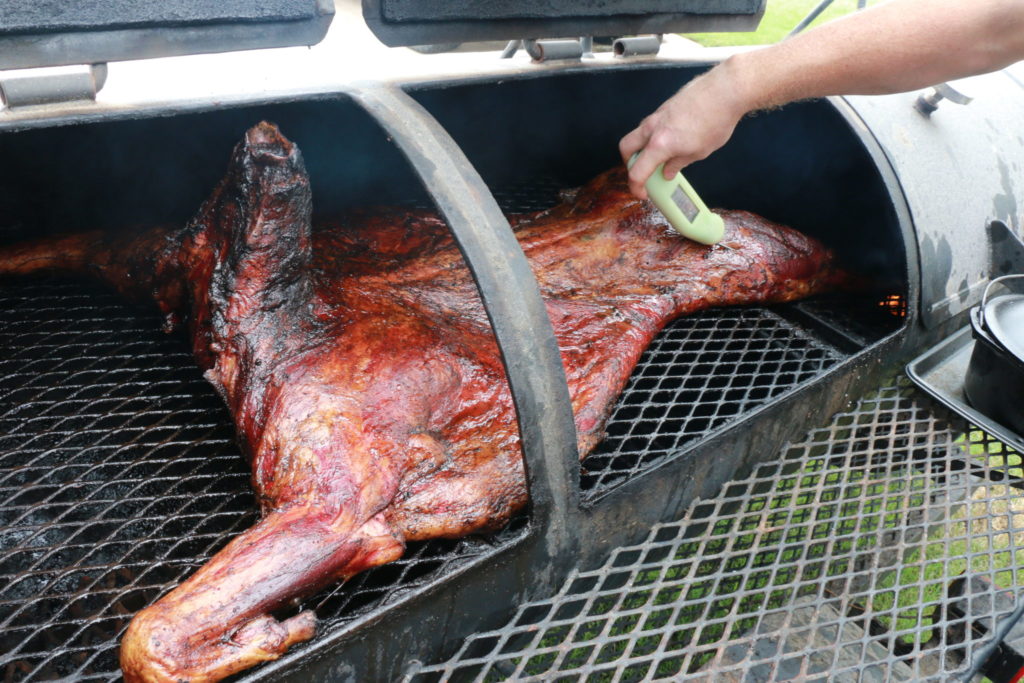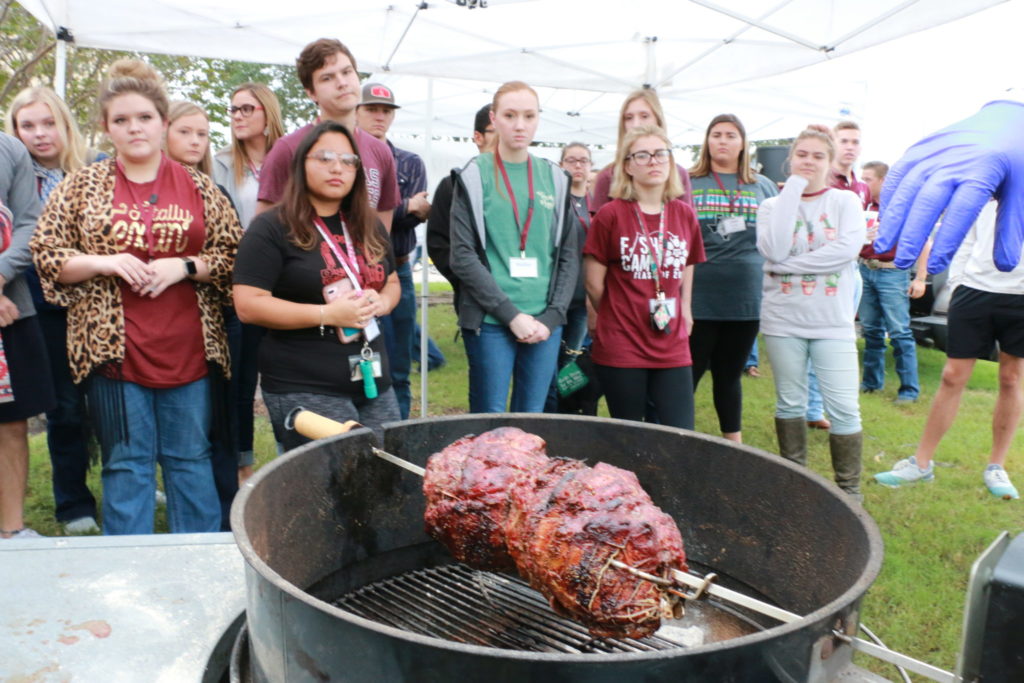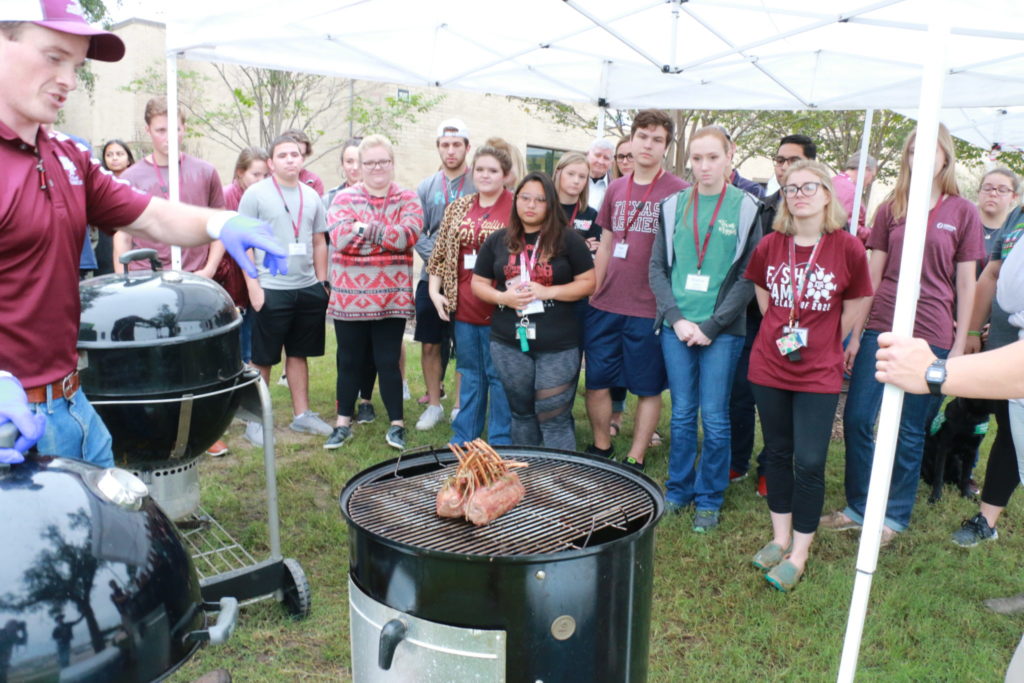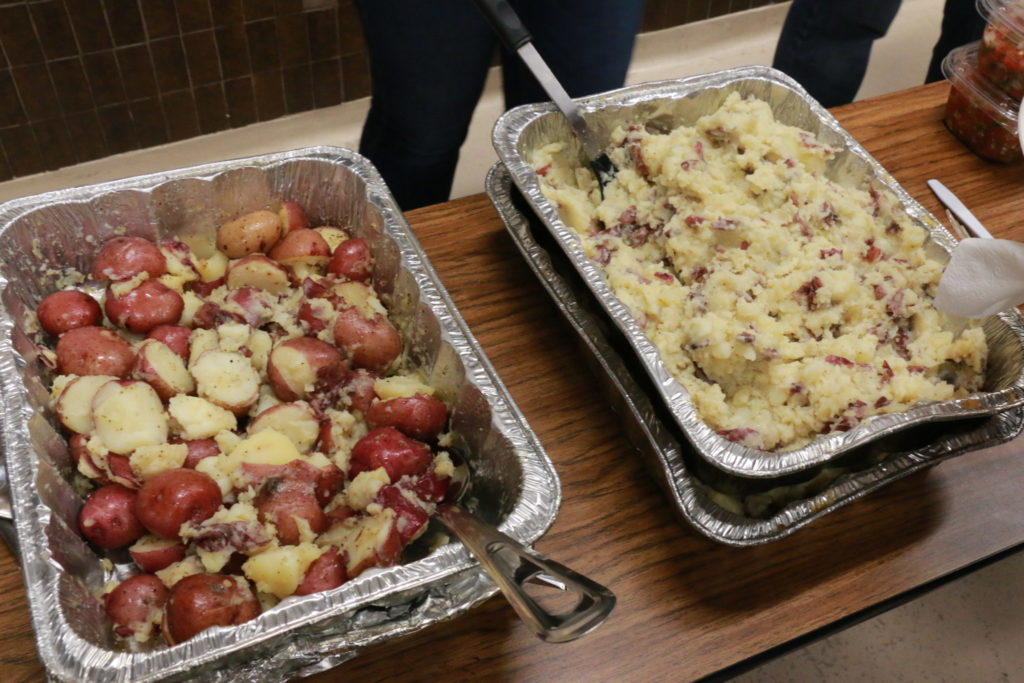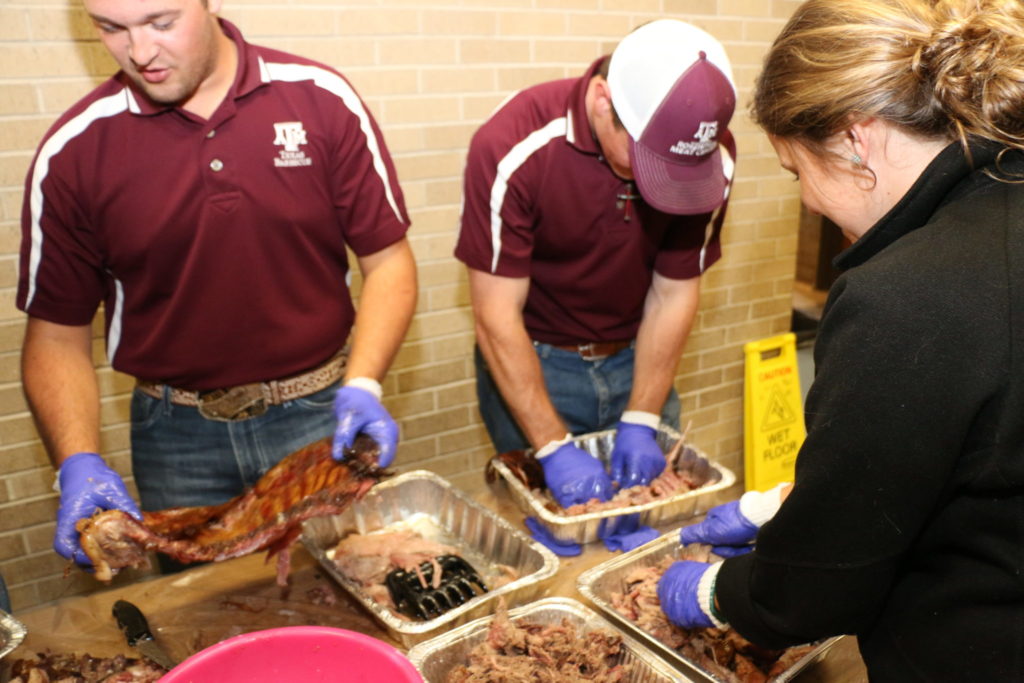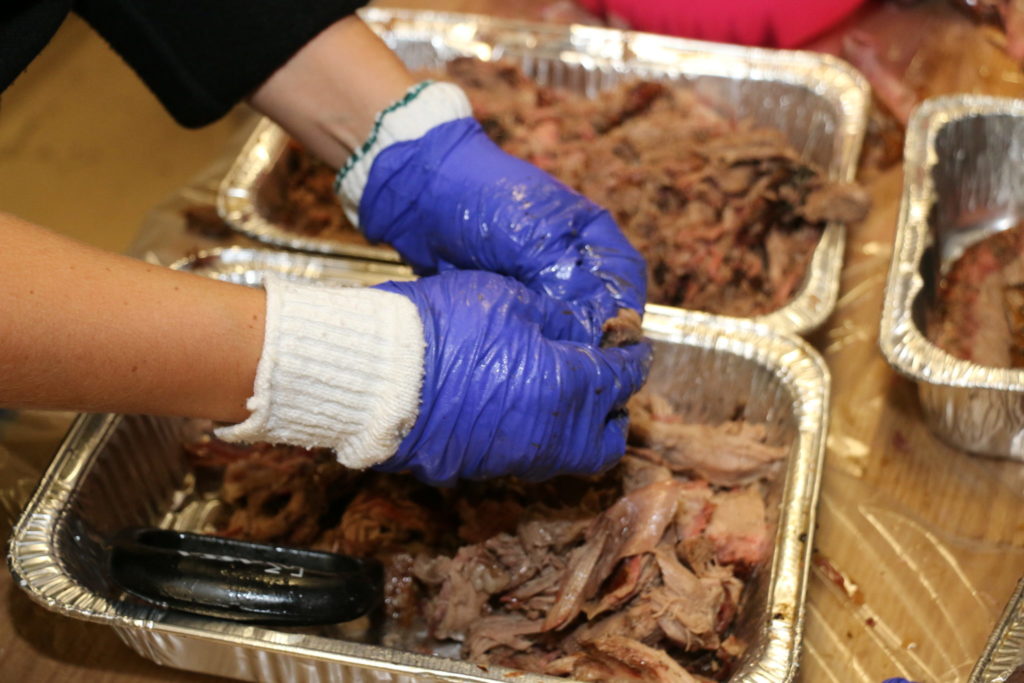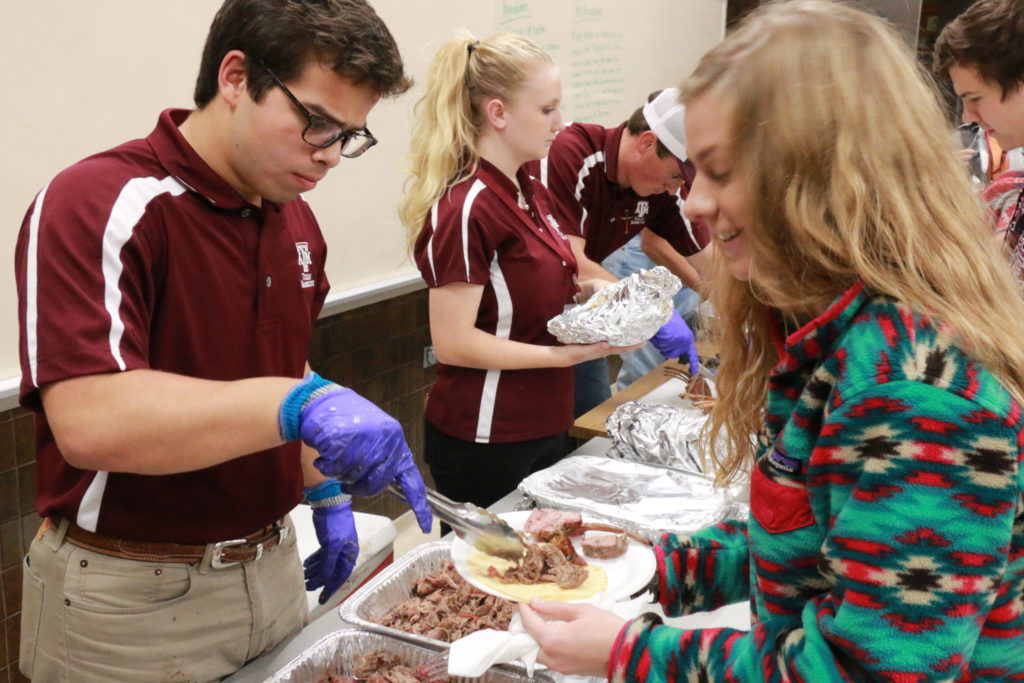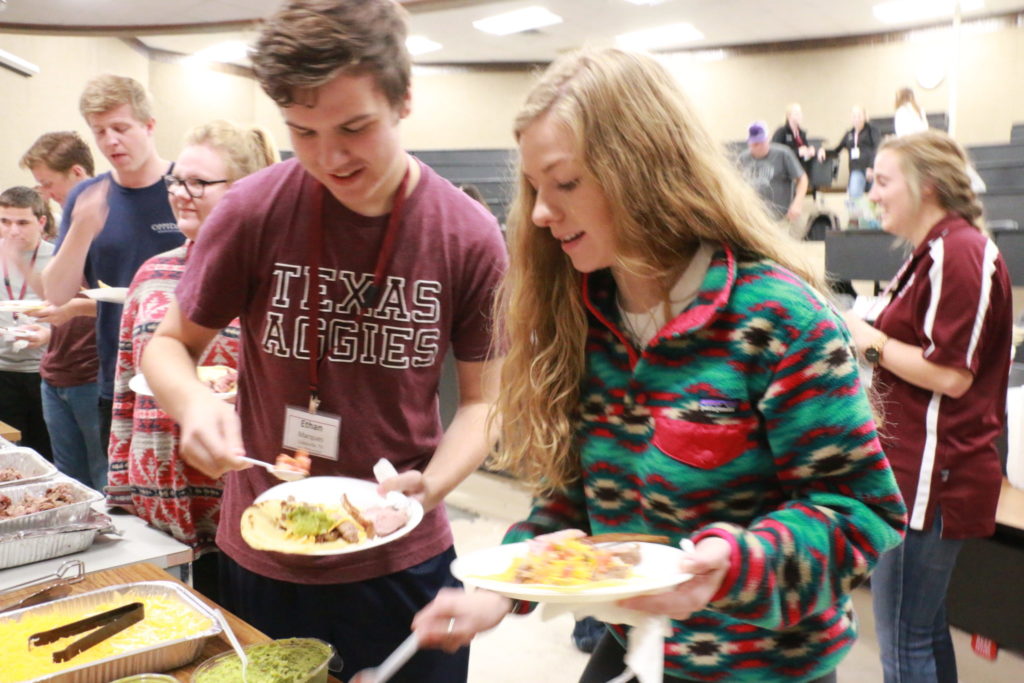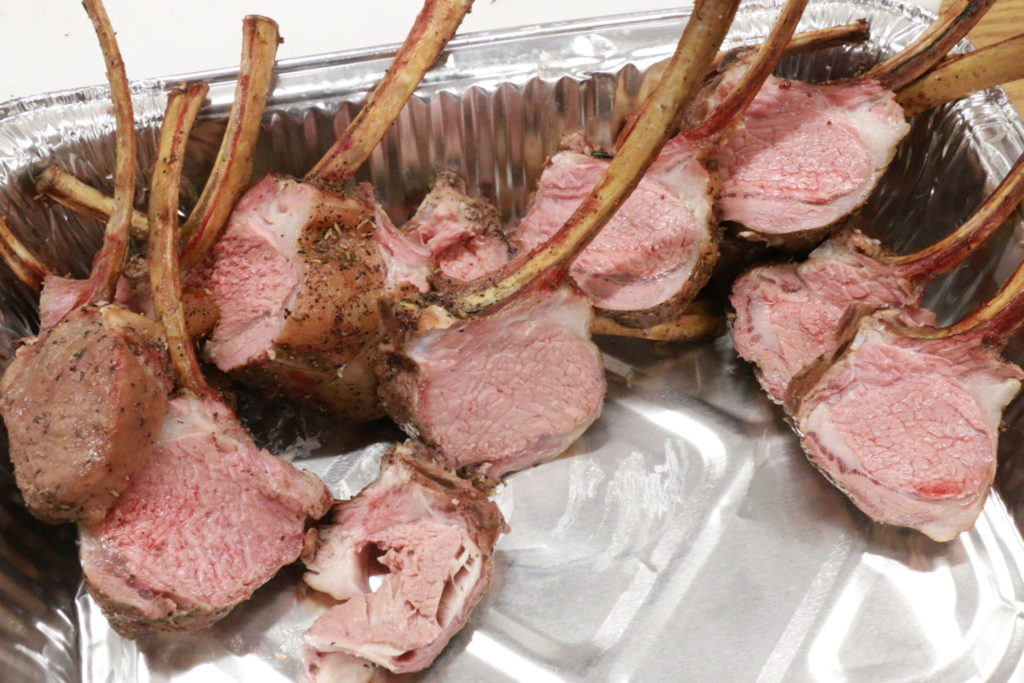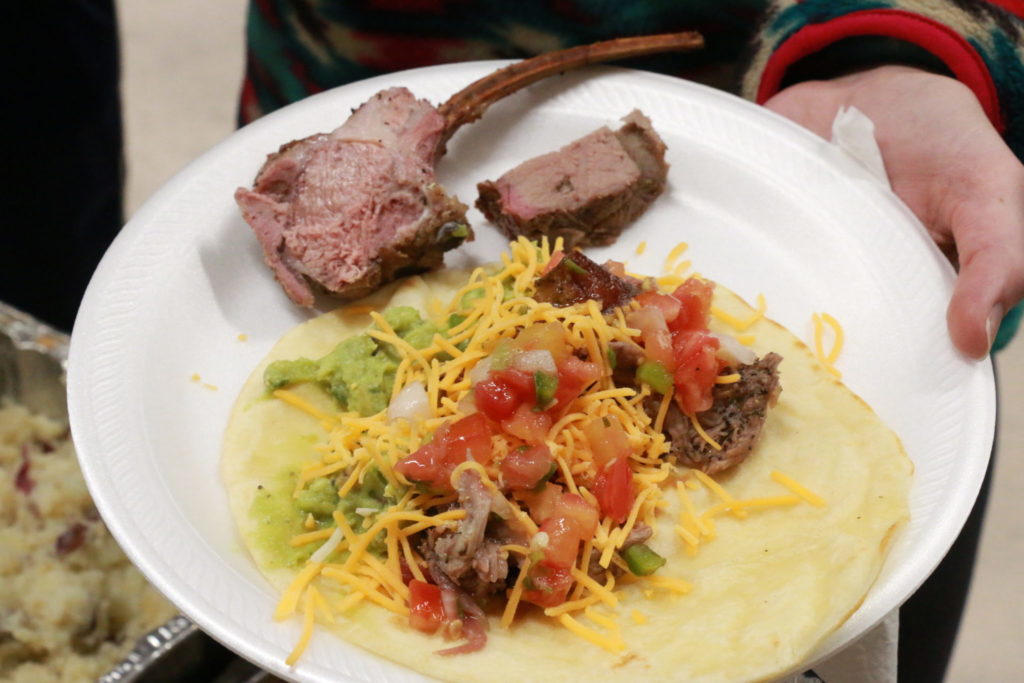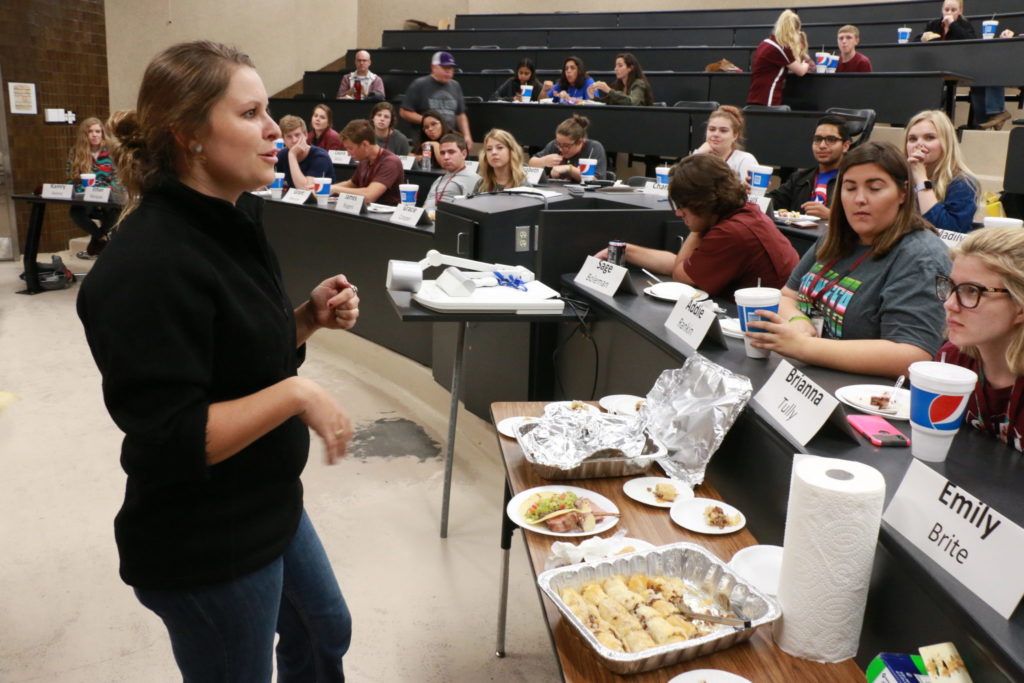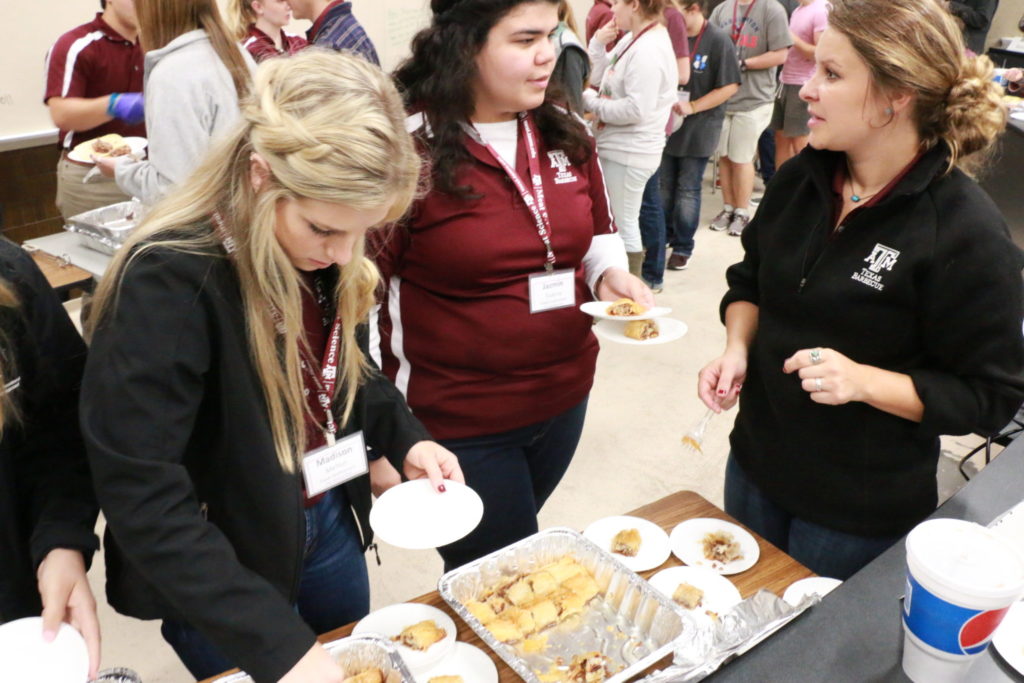Although lamb and goat are not mainstays of barbecue and especially Texas Barbecue, with lamb and goat being such important livestock species in Texas, we spend one of our lectures in ANSC 117, Texas Barbecue on these products. The products we focus on are crown rack roasts, rotisserie-roasted lamb legs, and smoked goat carcass for tacos. In addition, we cover the major primals and other cuts from lamb carcasses so that the students understand their terminology and use.
Lamb carcass cutout and terminology
Brogan prepared a lamb carcass wholesale cut display to show the students what the cuts are called and where are they are from. Ray used the display and a lamb carcass for the demonstration. The major wholesale cuts are the leg, loin, rack, and shoulder, and the minor cuts are the flank, breast, foreleg, and neck. Ray also showed the students the website from the American Lamb Council to see the cooking recommendations from this group.
Smoked goat carcass
Goat has been used in the past to make goat tacos. We have been preparing a spit-roasted goat in the past, but this process has taken too long and the meat in the interior of the legs has never been cooked enough for the meat to be shredded for tacos. This year, we decided to prepare the goat in the offset smoker. It turned out well, and we probably will be doing this more in the future. The goat was cooked until it reached 170°F internal temperature in the legs.
Rotisserie-roasted lamb legs
We used boneless lamb legs with rosemary on the Weber Kettle Rotisserie. This product always is well received by the students. These legs were cooked until they reached 145°F internal temperature.
Crown rack lamb roasts
Making crown rack lamb roasts is a great way to have some wonderful lamb chops for a fancier meal. These crown racks were smoked until they reached 145°F internal temperature.
Red potatoes
We boiled red potatoes with a batch of them mashed and the other batch left fairly intact. Both were seasoned with salt, pepper, and lots of butter. These potato dishes matched well with the lamb.
Making goat tacos
We make goat tacos using pulled goat, tortillas, guacamole, pico de gallo, and cheese.
Serving the lamb and goat
Baklava
Part of Brogan’s family is Greek, and with the role that lamb plays in Greek dining, she thought it would be great to have baklava as dessert this week.
Baklava
Brogan Horton
This is a family recipe from Brogan.
Prepare syrup
- 3 cups sugar
- 2 cups water
- 1 stick cinnamon
- Juice of 1/2 lemon and rind
- 1 cup honey
Ladle over baklava when baked
Prepare and mix
- 1 lb (4-1/2 cups) pecans
- 1/2 lb (2 cups) almonds
- 1 T cinnamon
- 1/3 T cloves
- 1/2 cup sugar
Cut filo dough
- Peel 2 sheets and found in half to make rectangle approximate 8″ x 10″
- Brush ends with melted butter
- Cover with nut mix and roll as tightly as possible
- Brush pan and entire roll with butter
Baked 375°F until golden brown (8-10 minutes). Place finished/baked baklava in glass/tin dish and ladle syrup over pastry roll.

